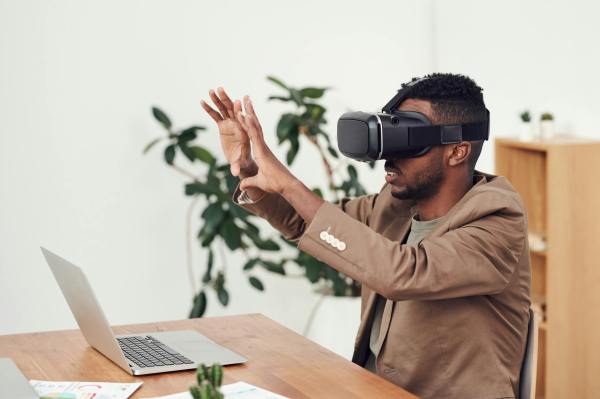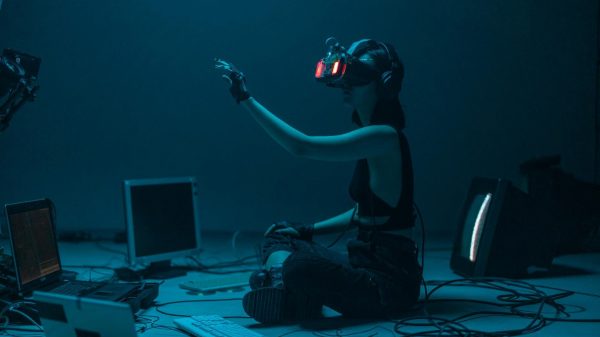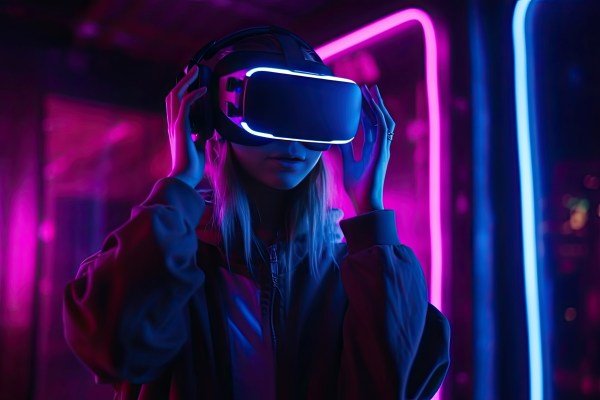Building a more inclusive metaverse will not only improve digital experiences, but will also give us a competitive advantage in the market compared to other virtual environments. Therefore, when strategies in the virtual world are considered, they are generally oriented towards inclusion and diversity.
A clear example of inclusiveness has been Meta, the project by Mark Zuckerberg, who has already designed his space under five inclusive pillars:
- Breaking language barriers. Users will be able to feel connected to others without having to share the same language.
- Allow access to avatars from diverse backgrounds, breaking down physical barriers.
- Create options for self-expression.
- Increase diversity and equity.
- Ask the right questions so as not to offend the sensibilities of any user.
Inclusive metaverse against the digital divide
Nowadays, it is almost impossible to carry out any administrative, educational, business, health, etc. activity without being linked to technology. In addition, the environment is progressively moving towards the virtual universe that will lead to the advent of the multiverse era. Will everyone really be able to participate in this digital space?
Digitisation must work for inclusion. As technology becomes more complex, Metaverse can leave out millions of people: the elderly, people with disabilities, or users with limited time to adapt to change, are the most affected.
The number of people with disabilities is significant. According to the World Health Organisation (WHO) 15% of the world’s population suffers from some form of disability. But technological barriers affect the total population as it ages. According to the United Nations (UN) one in nine people on the planet are over the age of 60; this proportion will become one in five within 40 years.
Therefore, both segments of the population have greater difficulties in accessing new technologies if they do not think about them. In this sense, if the virtual universe does not adapt to their circumstances, the digital divide may continue to grow in an unbridgeable way.
Laws already require technology to be accessible, as indicated by the 2006 United Nations (UN) Convention on the Rights of Persons with Disabilities, ratified by the European Union, and driven by a Directive on accessibility of websites and mobile applications, with the goal of creating a European Union without digital barriers.
These initiatives have given a major boost to accessibility policies in Spain, where it calls for websites and mobile apps that receive public funding to ensure accessibility for people with disabilities.
Digital inclusion in the metaverse
Developers are working towards an inclusive metaverse, and to this end, a number of best practices and key aspects have been designed that, depending on the needs of people the developers are working to build virtual universes full of diversity and to break down barriers.
Hearing impairment
In this case, the best ally in the multiverse space will be the subtitles, differentiating between subtitles that only reflect the dialogue and captions or descriptive subtitles, which reflect other types of sounds, e.g. laughter, explosions, moods, etc.
It is also advisable to take care of the typography and to favour legibility against the background. Meta recommends using San Serif on a solid white background or a black background with opacity.
Visual impairment
It is important to understand that visual impairment goes beyond blindness. Colour blindness or low vision problems such as cataracts or a reduced visual field are also visual impairment. In this context, there are three recommendations for text which include modifying the font size, avoiding colour contrast and the possibility of modifying the position of the text.
For colour blindness, if a virtual space is based on colours for the game mechanics, developers should provide various options for the user to modify it. In the case of people with total blindness, sounds and touch are the main ally. Thanks to haptic feedback and sound description of the elements, total blindness would be possible in the metaverse.
Motor disability
At least four aspects related to motor disability must be taken into account: locomotion, body position, accuracy and single-handedness.
- Locomotion or movement: it is important to incorporate different elements of locomotion into the metaverse access accessories (VR goggles or controllers). To do this, the turn options must be configured, as well as the speed, or opt for teleport with snap turn.
- Body position: people in wheelchairs still have difficulties in playing and accessing the virtual space of the metaverse. Some platforms have already included in their VR goggles the option to simulate that the user is standing.
- Accuracy: In this respect, many applications already have a magnetised menu. A kind of invisible magnet that sticks to the closest position to the body, to interact more accurately.
- Single hand: the single hand option facilitates access for those who have suffered the loss of this part of the body.
- Intellectual disability The metaverse can be a great ally to promote learning for people with intellectual disabilities. The space, from the child’s or adult’s point of view, will be a video game to have fun with, but at the same time, they will be learning basic solutions for their learning. For example, concepts of group work, understanding relationships, recognising emotions or skills such as imagination.







